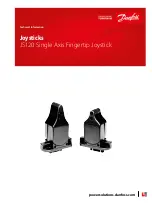
- 4 -
1B. Brief instructions for installations that require CE-marking
Mandatory requirement by the European Union (EU)
All electrical installations that are to be used within EU must comply with the requirements to all
relevant EU Directives, including the EMC directive (89/336/EEC). The OEM, panelbuilder or
installer/contractor is responsible for that the requirements are fulfilled, and verified as well as to
give the equipment the CE mark.
In principle the EMC directive states that no apparatus, equipment or systems are allowed to disturb
or be disturbed by surrounding apparatus, equipment or systems. In order to meet this requirement
the product cannot exceed maximum emission levels nor be below minimum immunity levels
The required levels differs upon where the system or equipment is installed, if it is made in a
industry (environment 1) or in a public low voltage network (environment 2). In the Industry higher
levels of emissions are allowed. At the same time these installations require a higher grade of
immunity compared to the installations in public network. If there is a doubt in how to classify the
installation the local utility can be asked or the owners of the transformer.
How do you fulfil the requirements?
There are several methods to verify that a system meets the set requirements.
- One way is to use CE-marked equipment and to install these according to the installation manual
that is provided by the manufacturer. No further testing or verification is then needed as the
manufacturer already has done the necessary work. This is the way ABB has chosen in order to
simplify the usage of softstarters for systems and in other equipment.
- A more complicated way is to use non CE-marked apparatus, and then to verify and test each
system separately. The manufacturer of the system and/or the assembled equipment is then
responsible for the verification.
The following guidelines are to simplify and ensure that all installations always fulfil the above
mentioned requirements acc to the EMC and LVD requirement. There is then no need to separately
verify the system or assembly.
ABB's solution for installation that require CE-mark
Installations of softstarters type PSD(H) in industrial network:
In softstarters PSD(H) thyristors and microprocessors are used that can cause emission during
operation. This emission can be reduced by using a by-pass contactor, that ensures that the system
fulfils the compatibility requirement. Another advantage by using a by--pass contactor is that the
total powerloss is reduced, and thus it is not needed to have extra fans for cooling if the softstarter is
enclosed.
• By-pass contactor:
When a by-pass contactor is used the softstarter is by-passed at continues
operation, The by-pass contactor is connected in parallel to the softstarter that is only active during
start and stop of the motor. The operation is simplified if the built in signal relay K5 (top of ramp /
TOR) is used to control the by-pass contactor. The by-pass contactor is automatically in operation
after completed start and will remain so during continuous operation. The Softstarter can still be in
active status but no current will pass through it, instead all current will pass through the by-pass
contactor.
For connection of the by-pass contactor, please see section 2.
• Function PF
(Energy saving at low motor load): Can not be activated during operation with a by-
pass contactor included.
• Earthing:
The Softstarter has to be connected to earth.





































